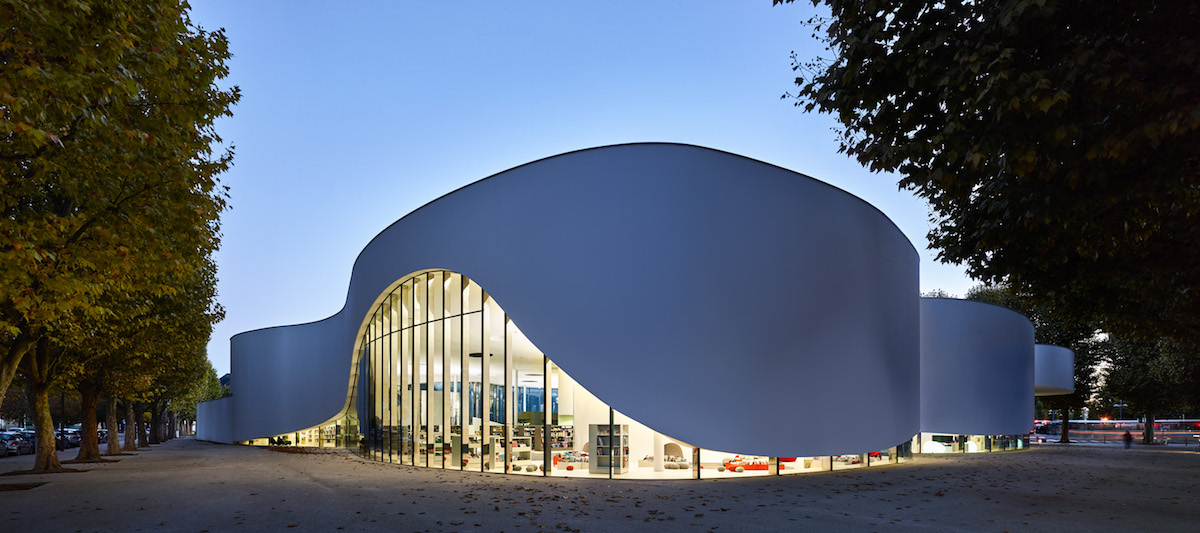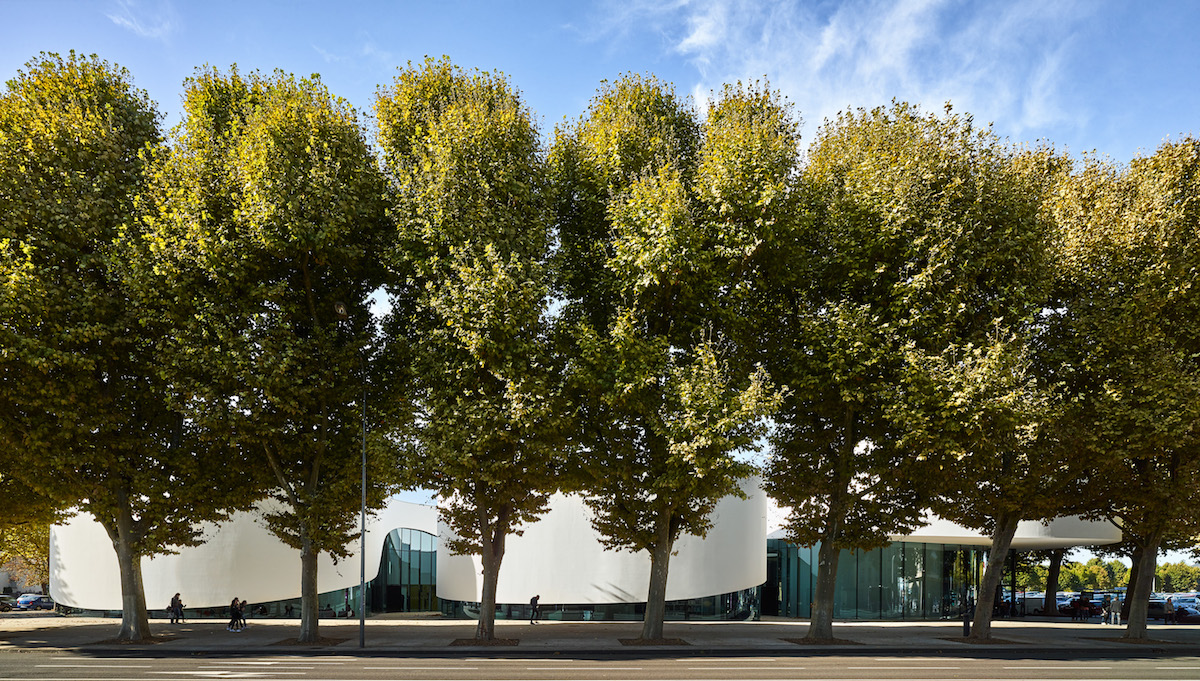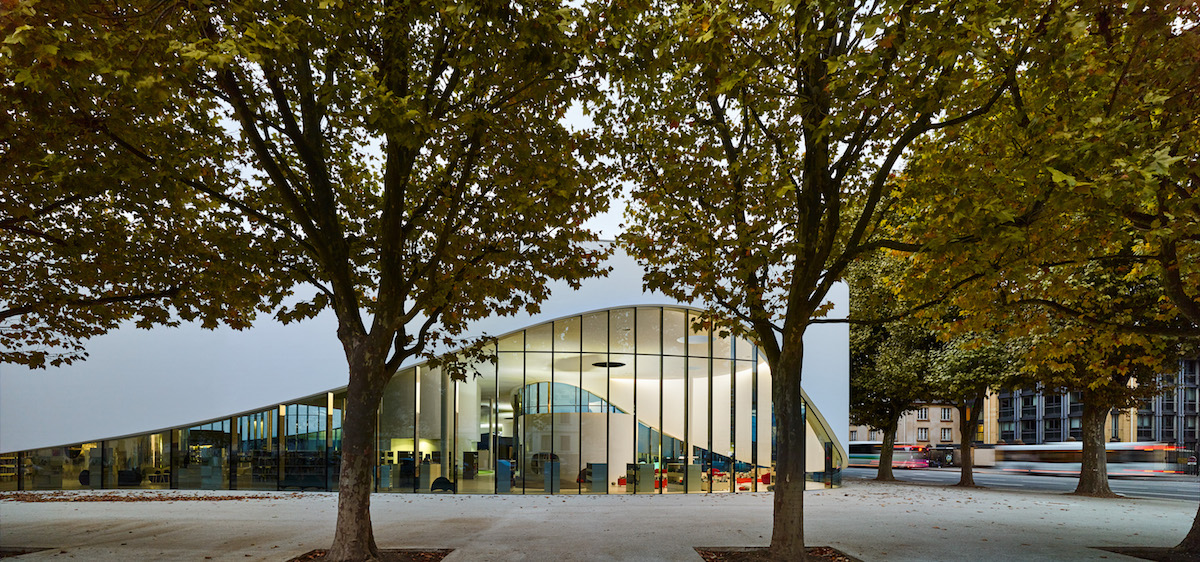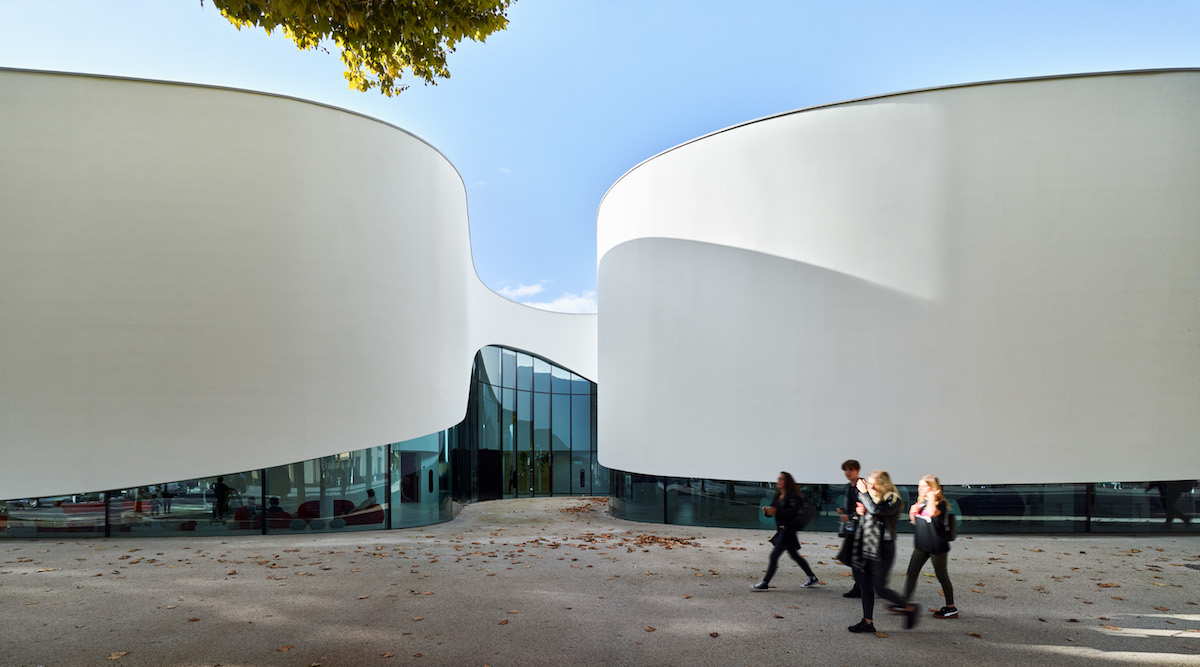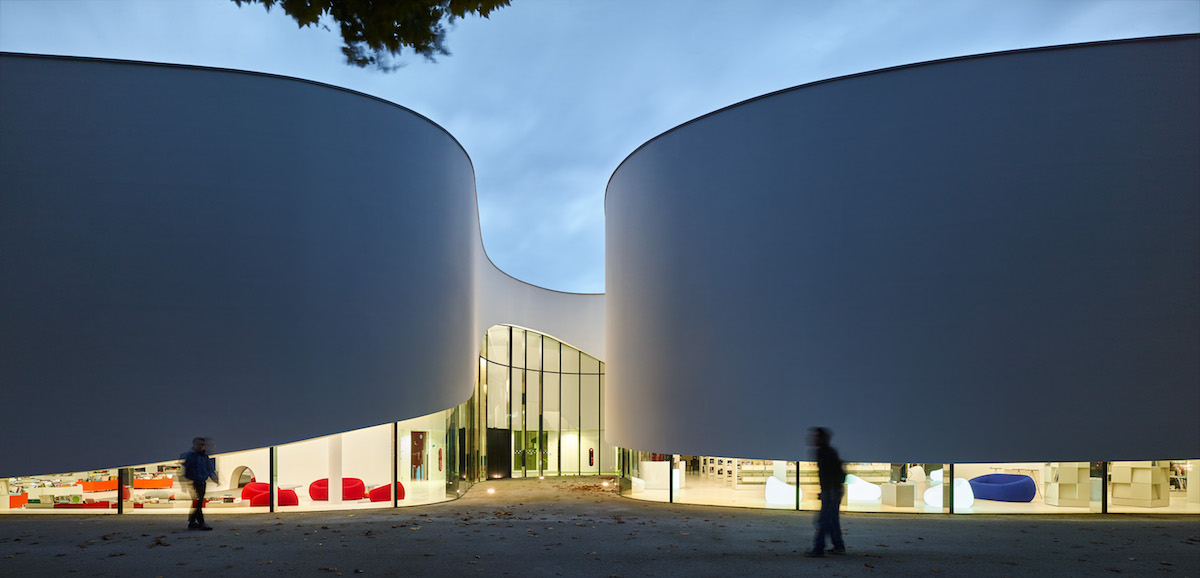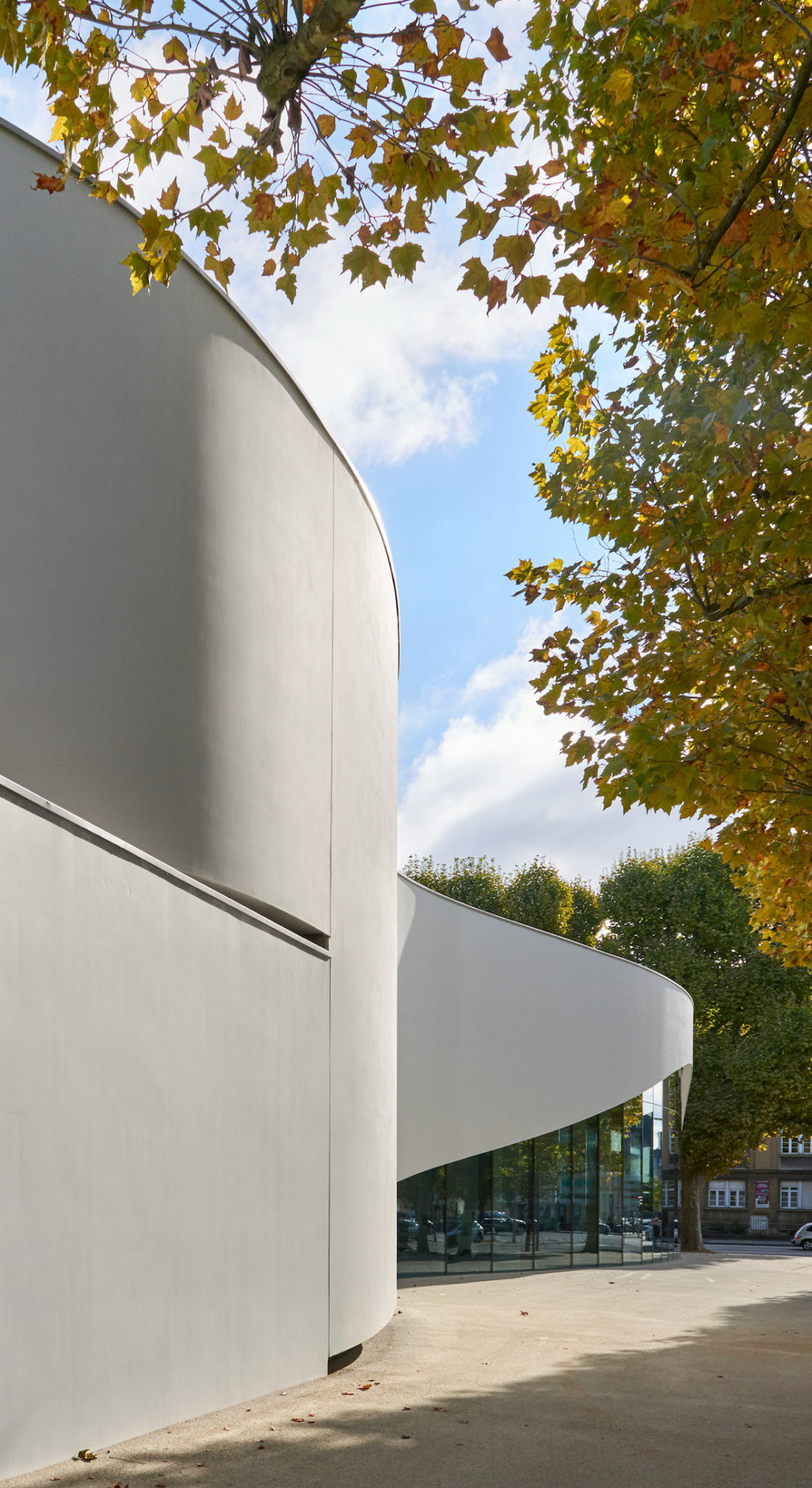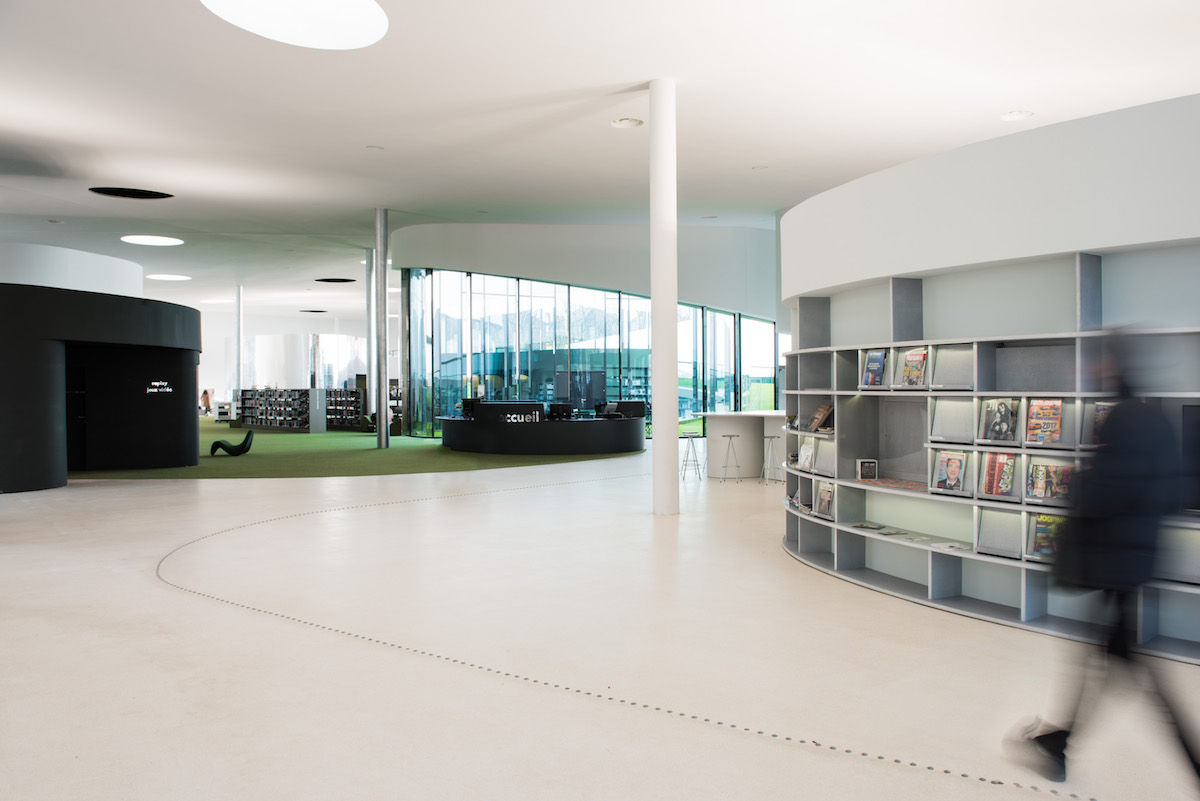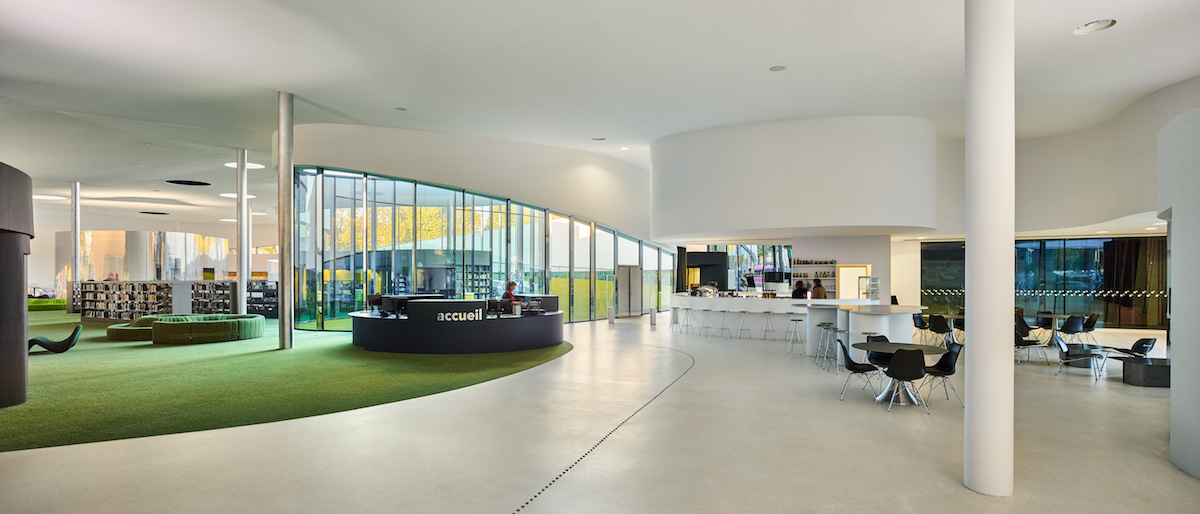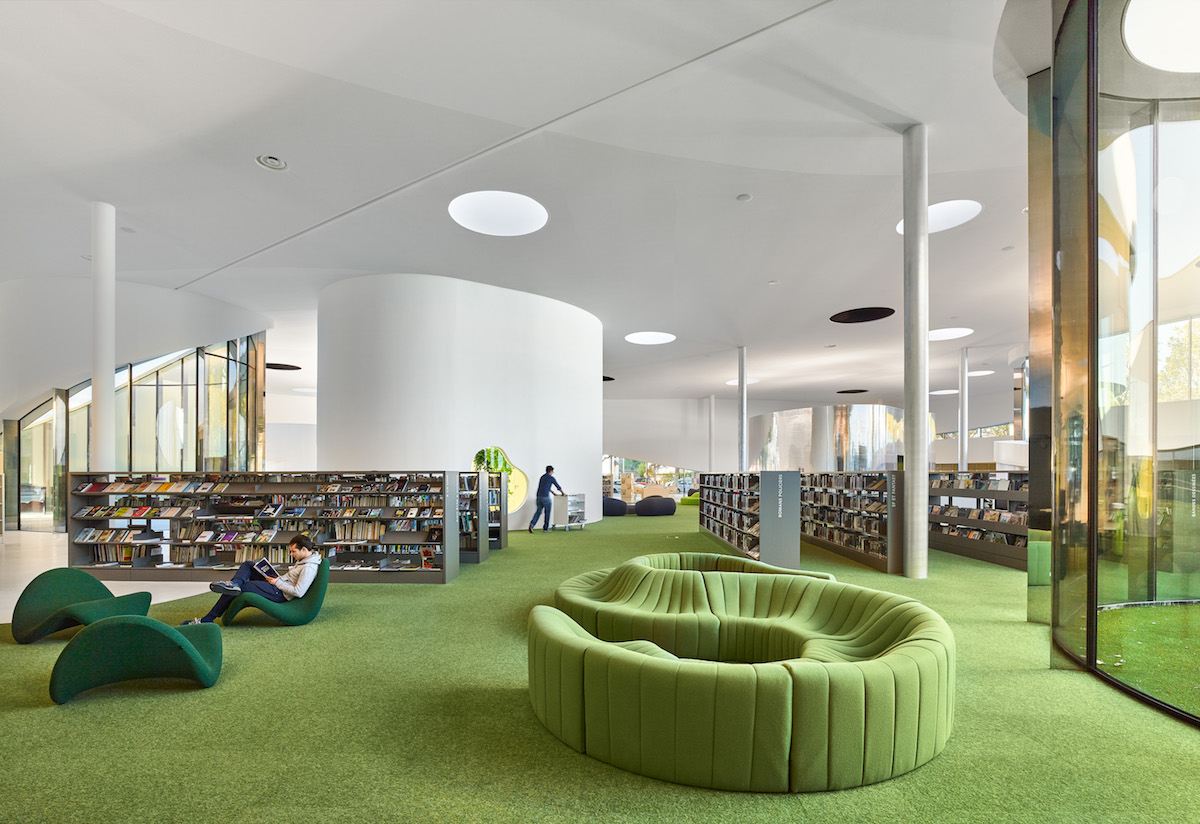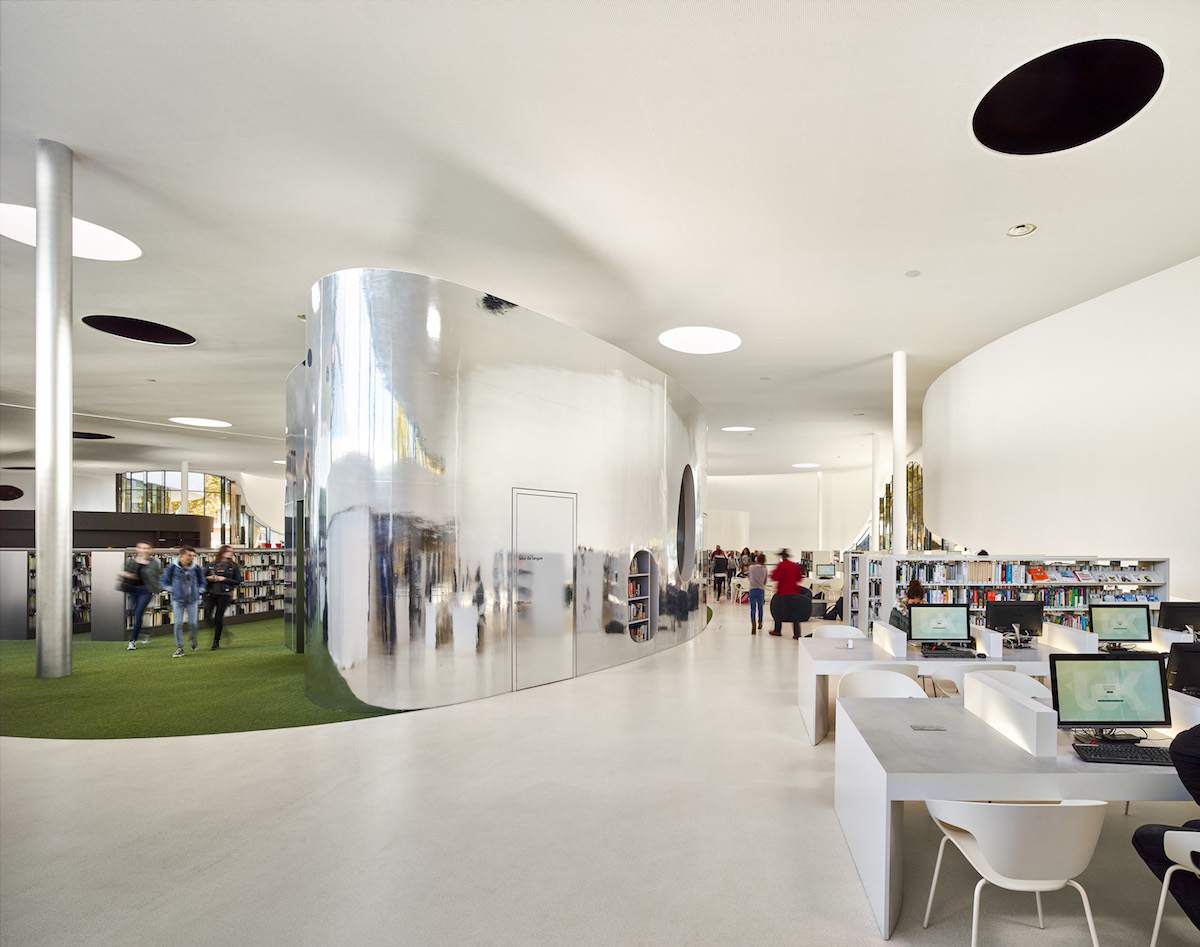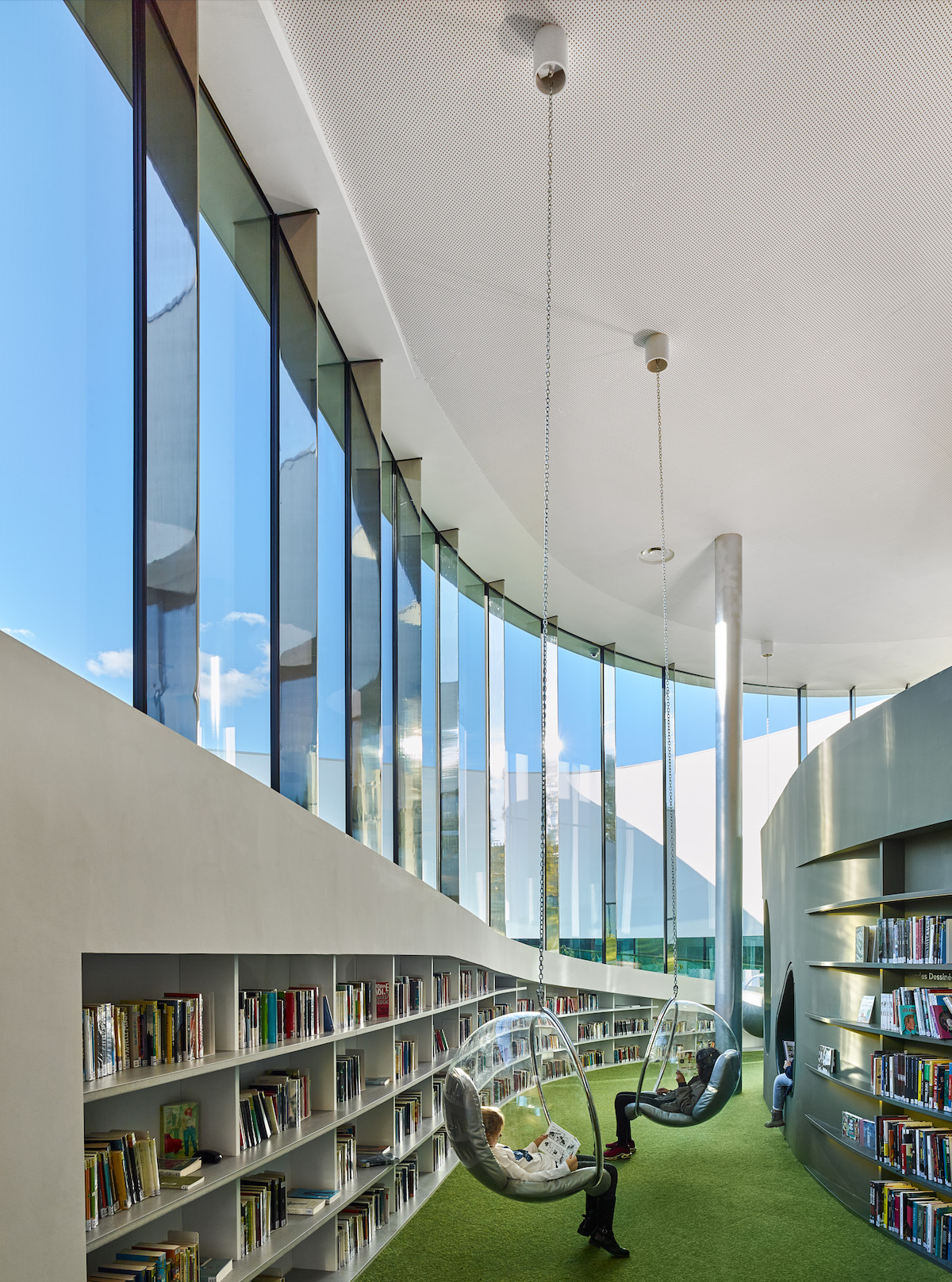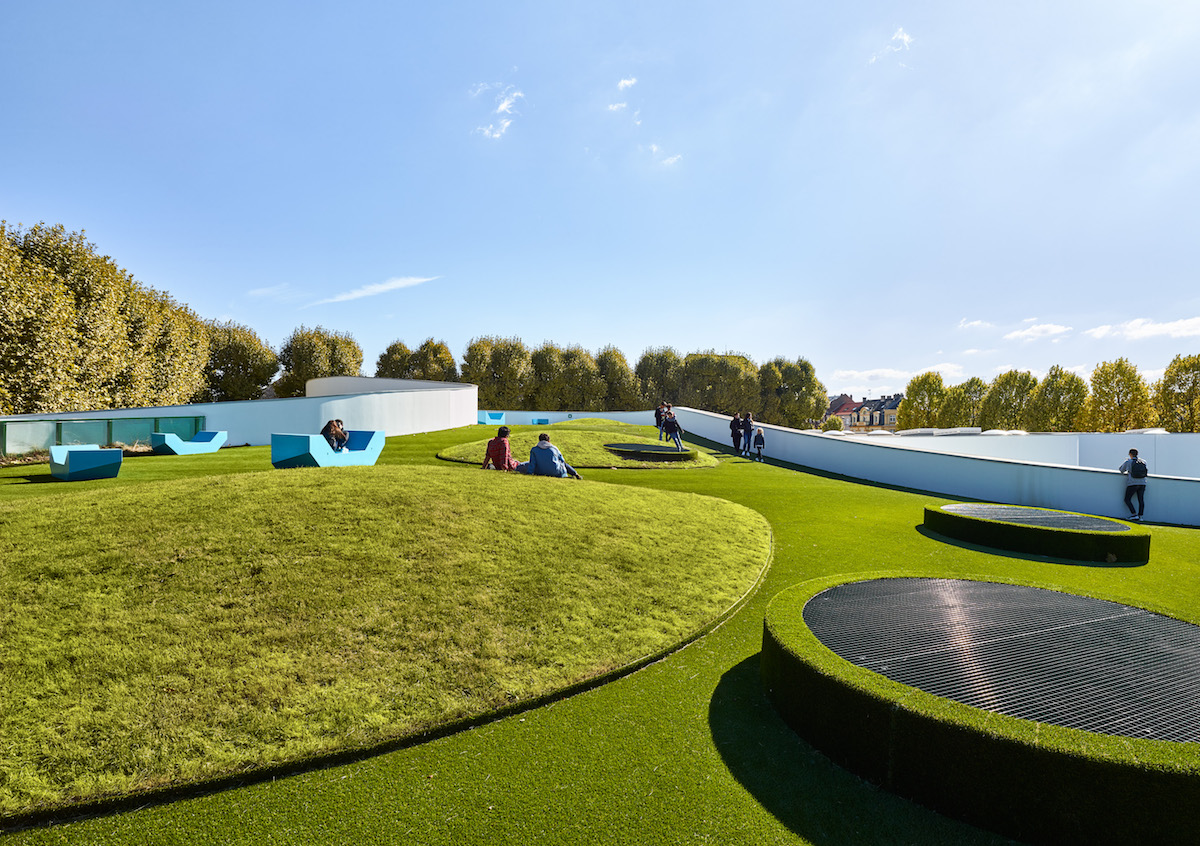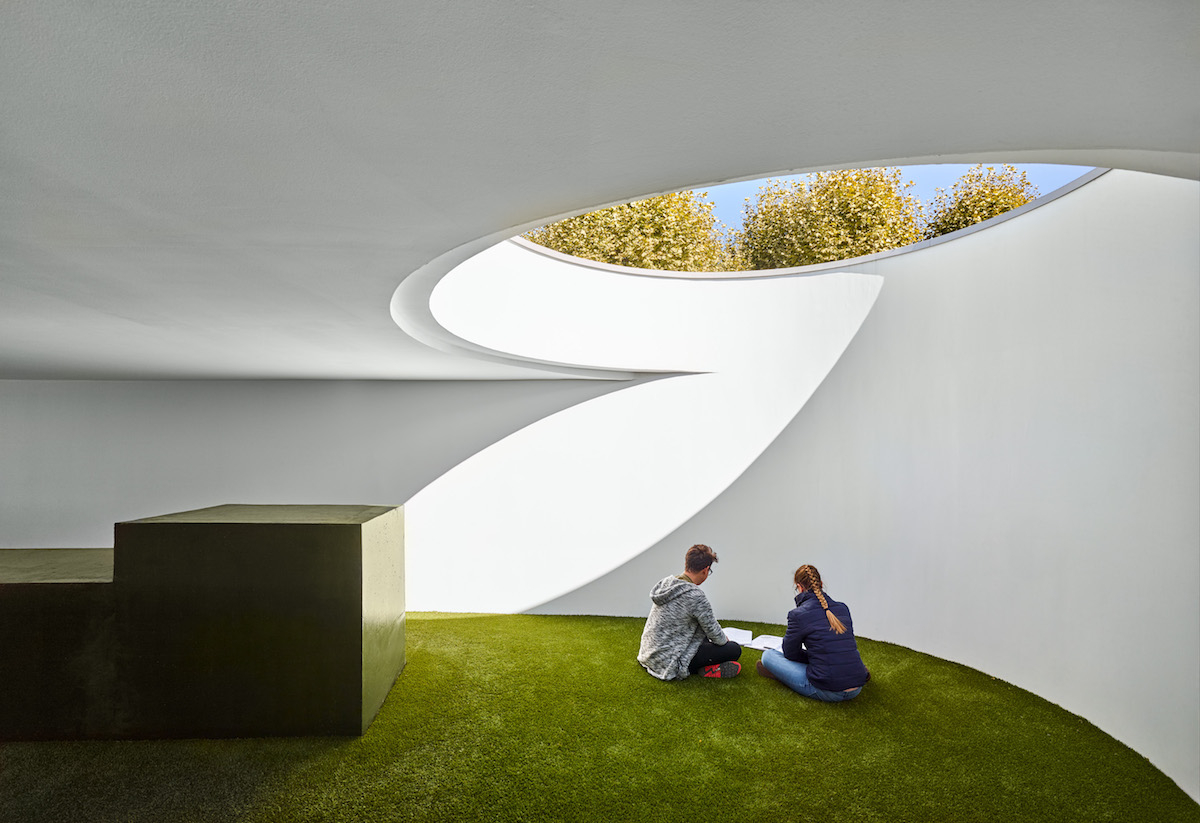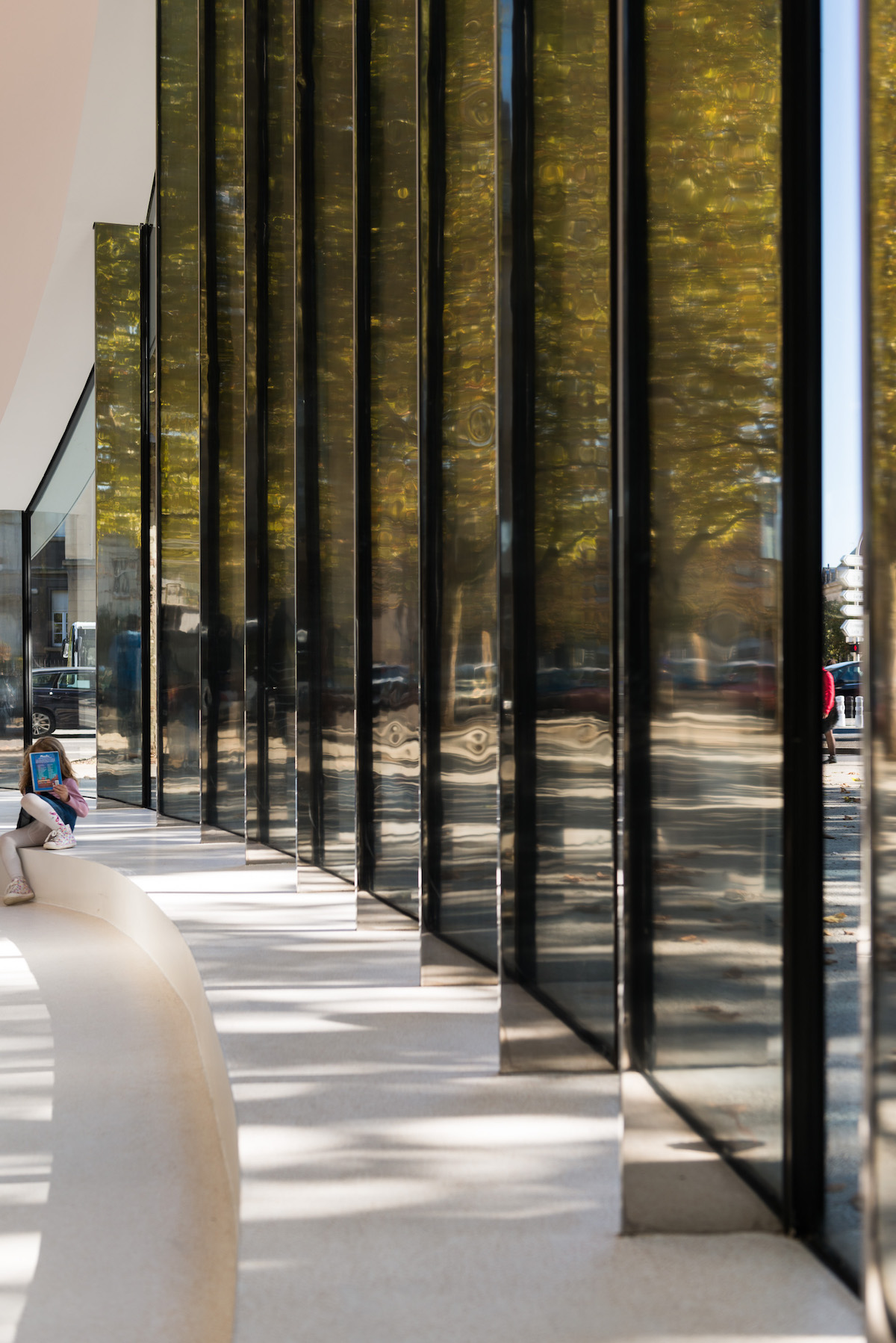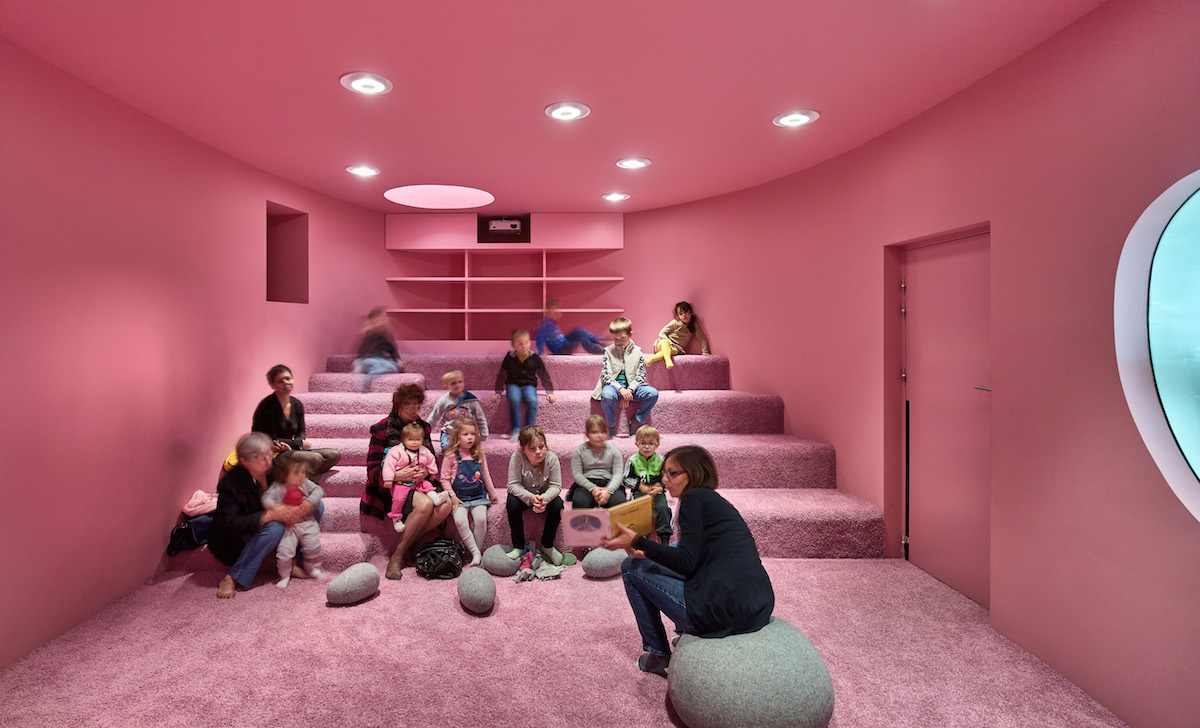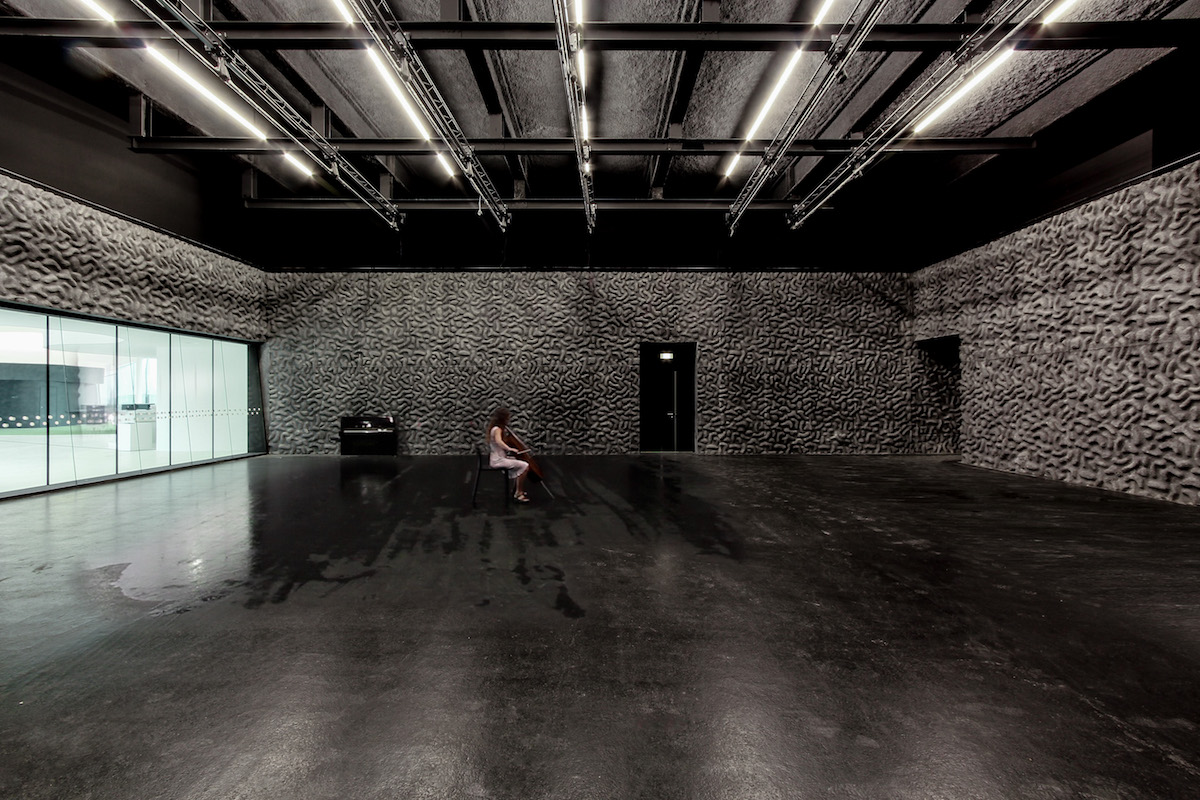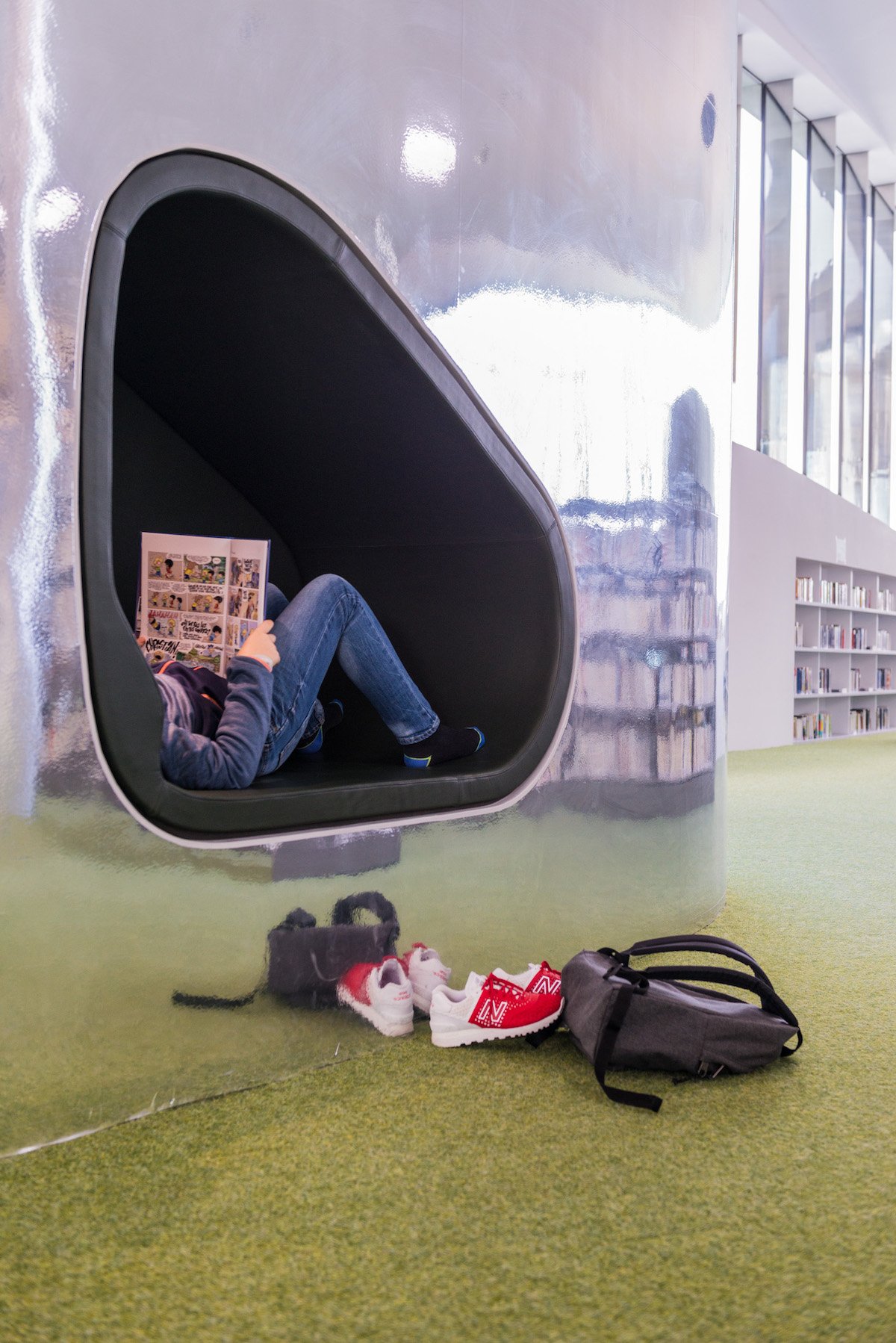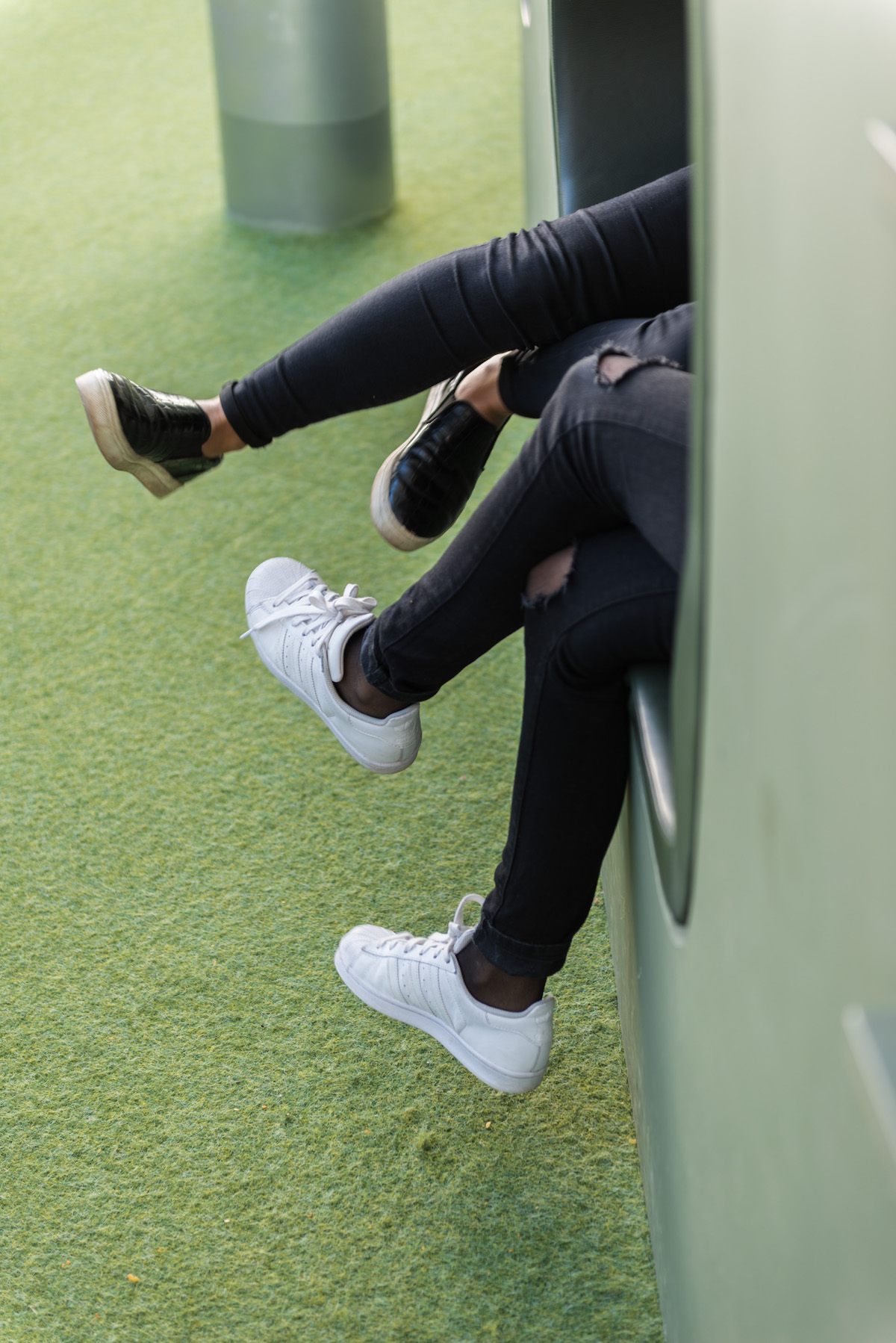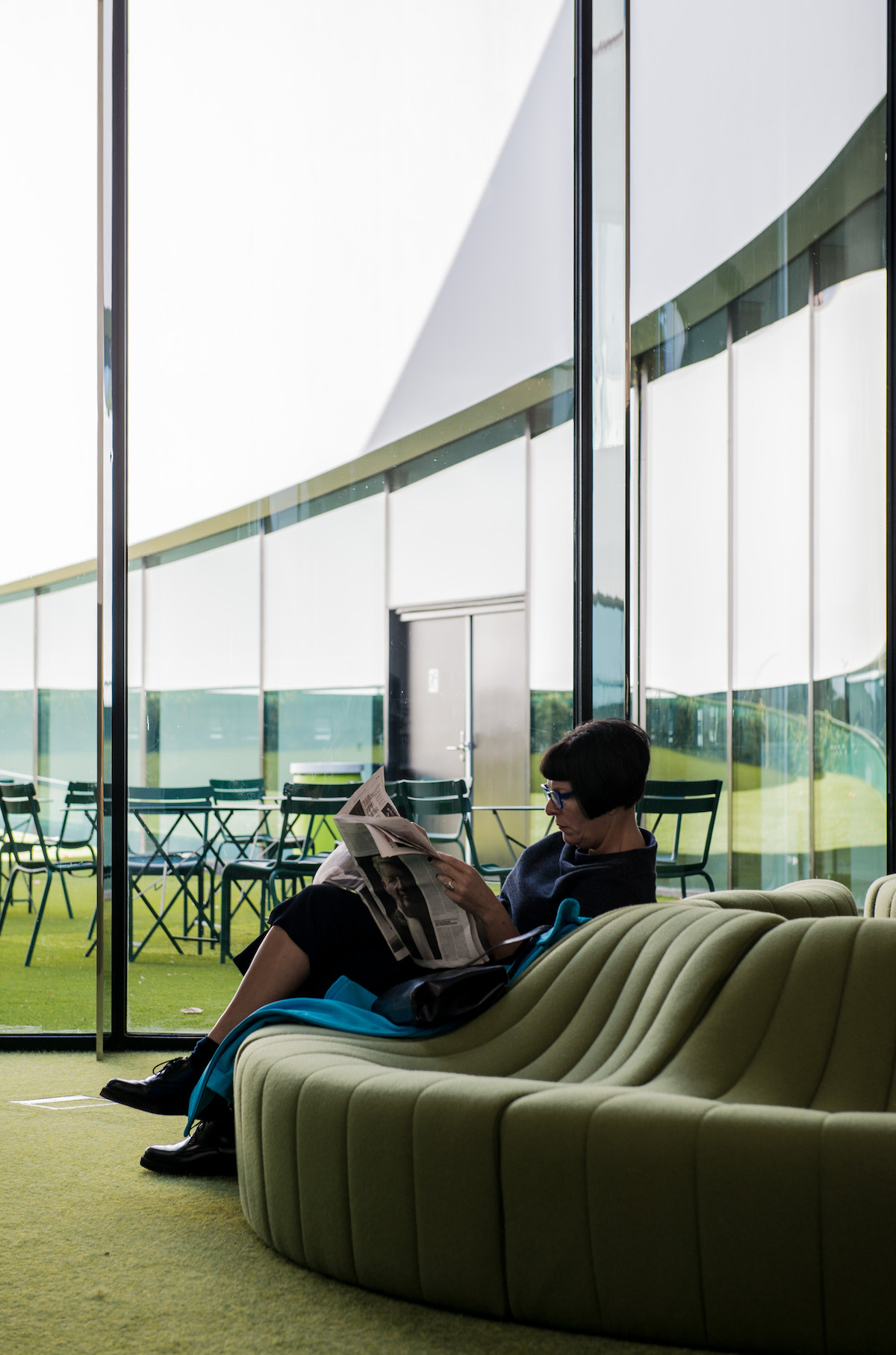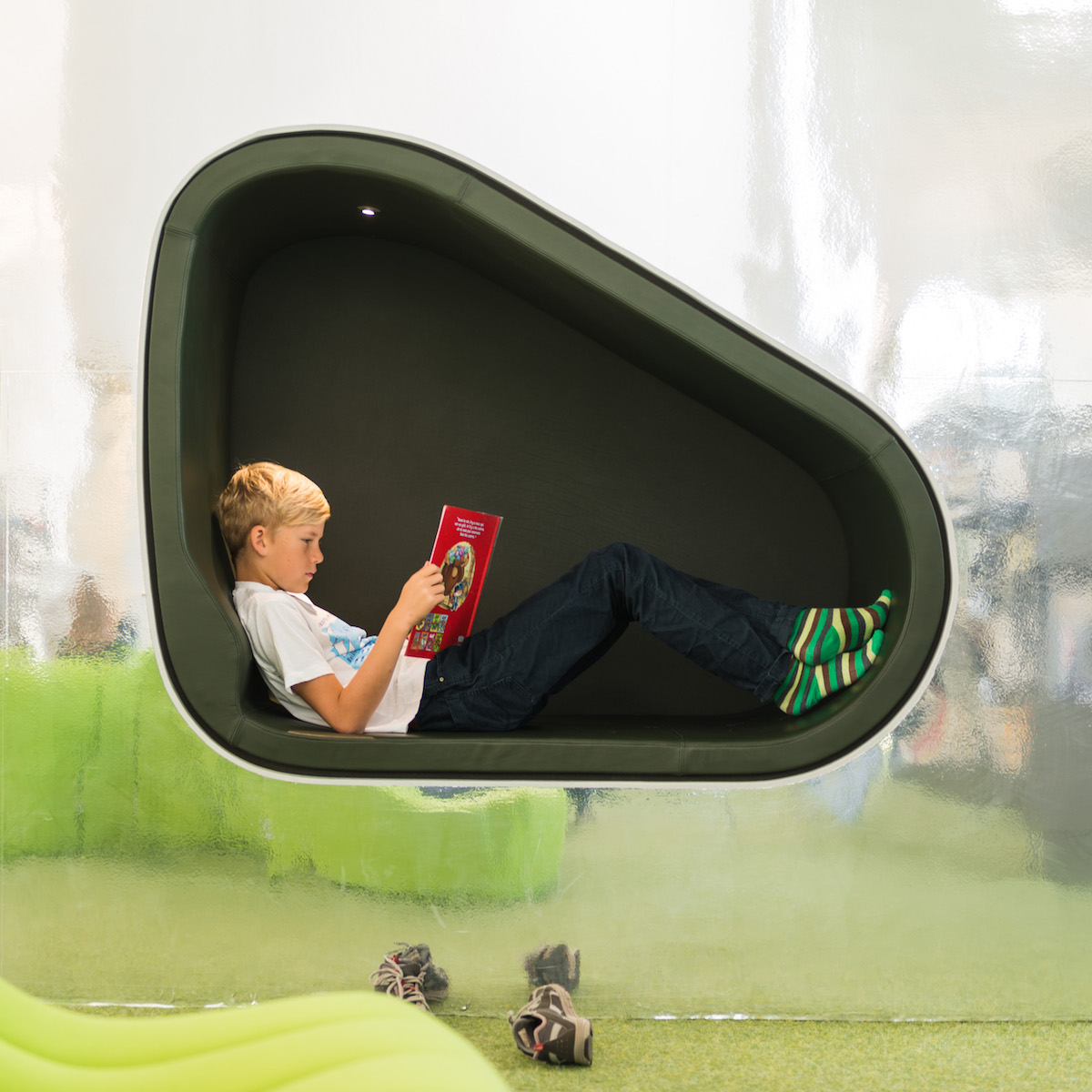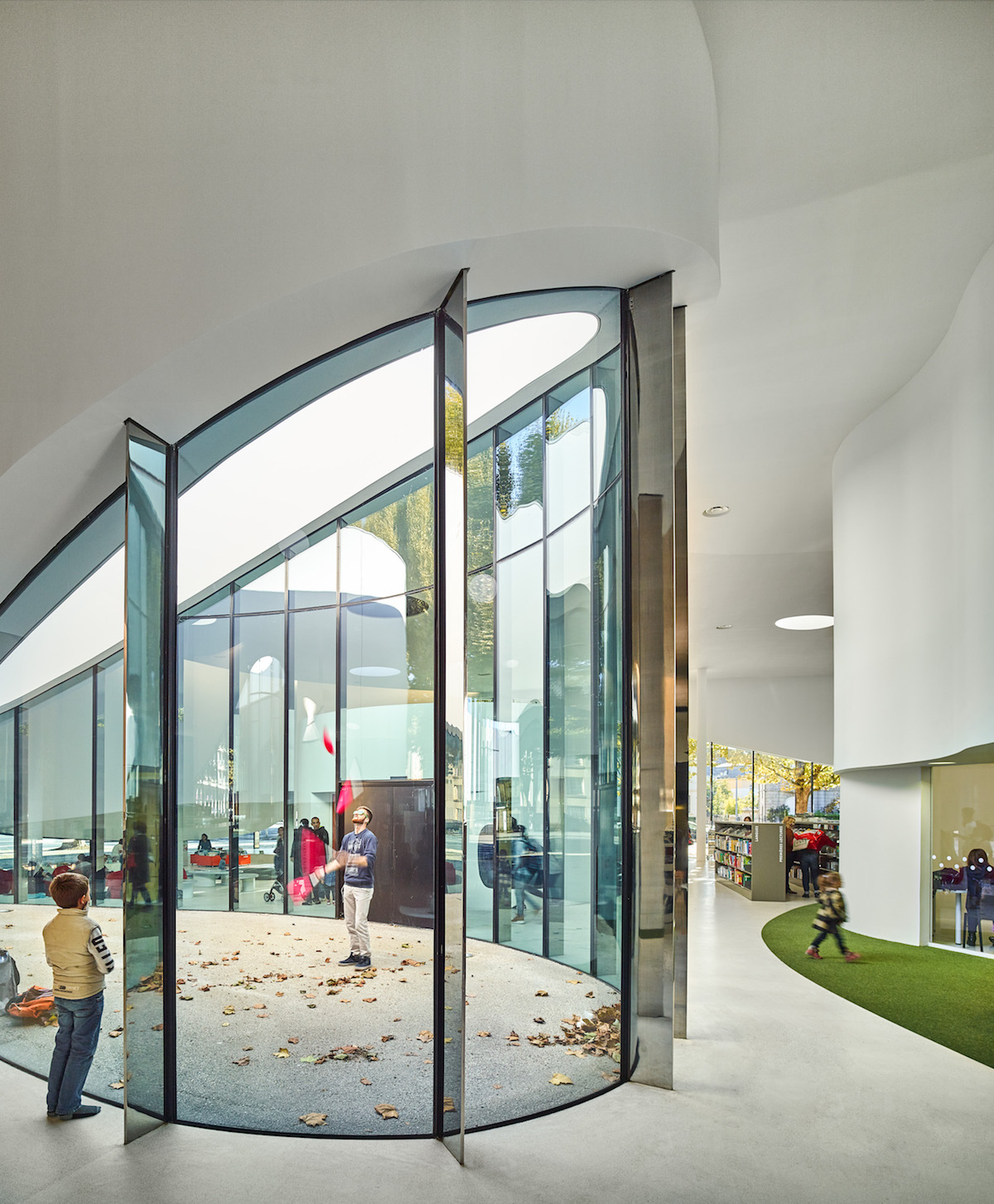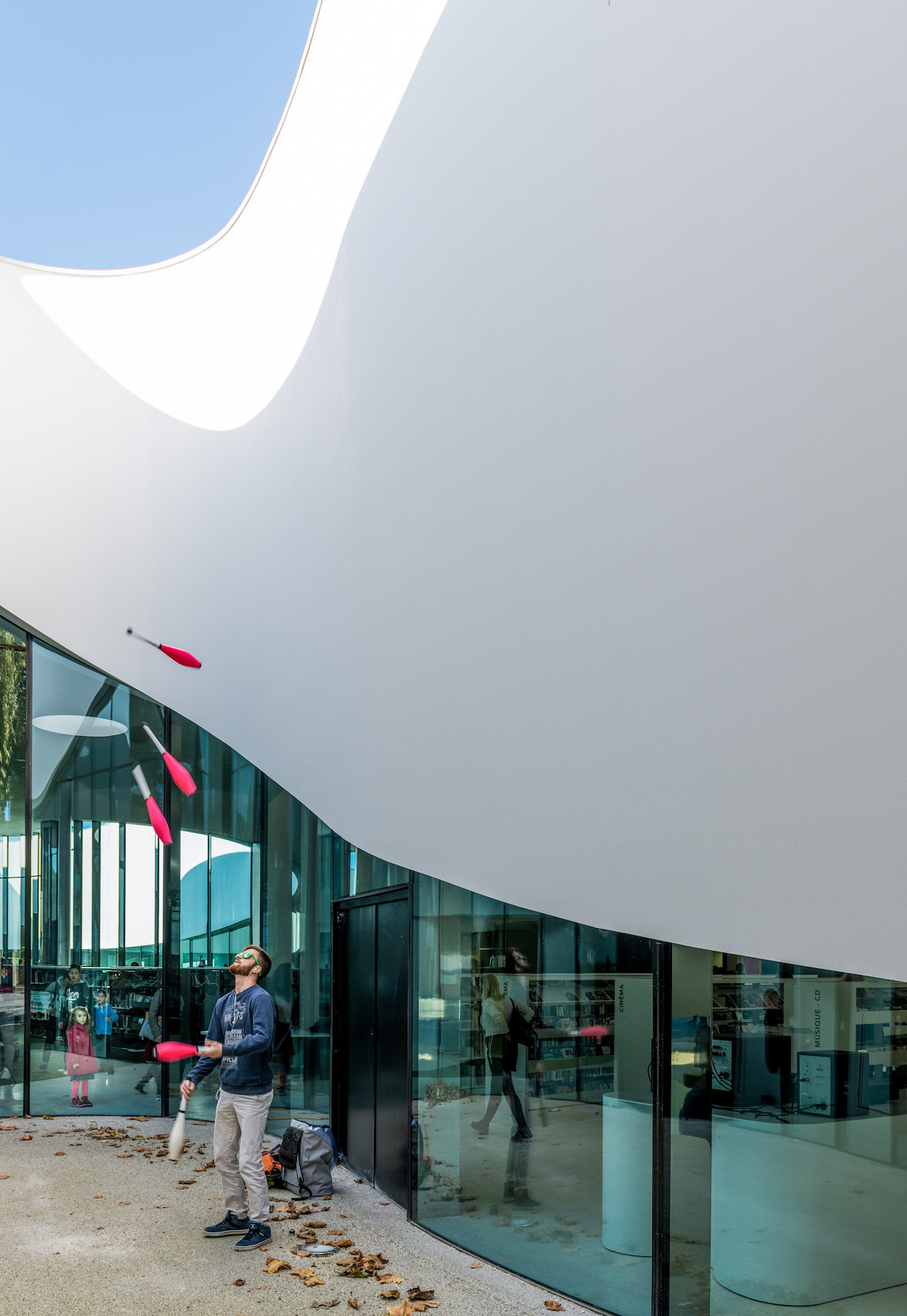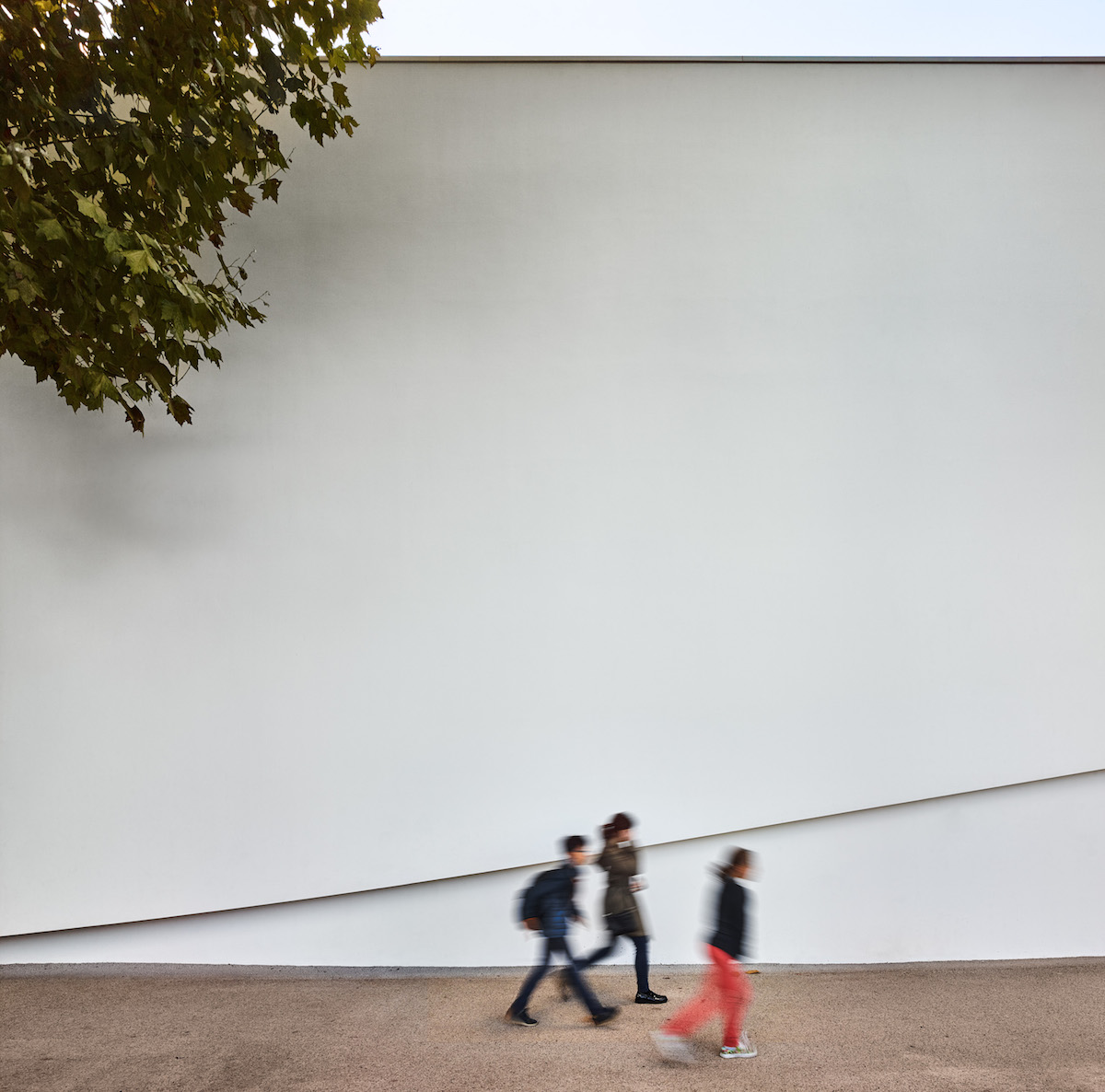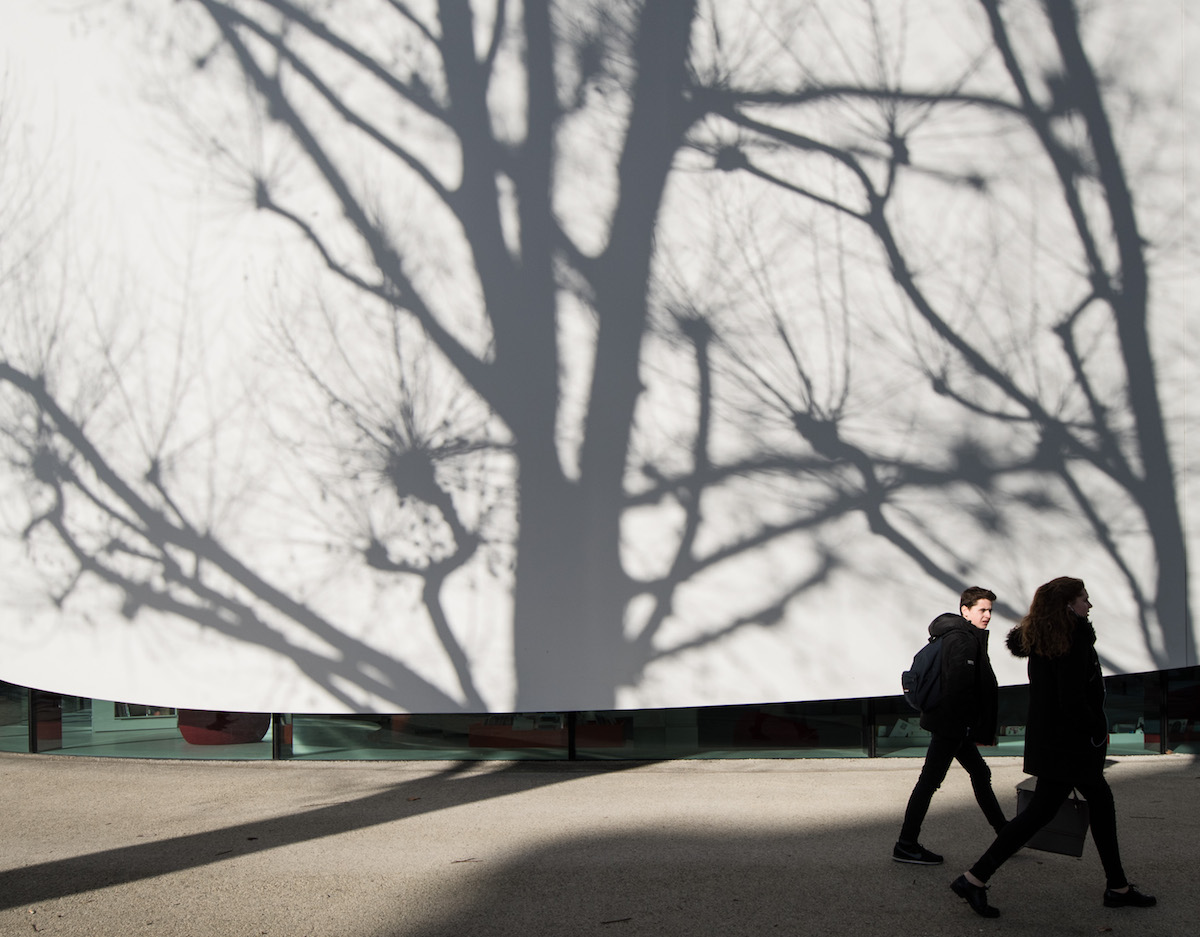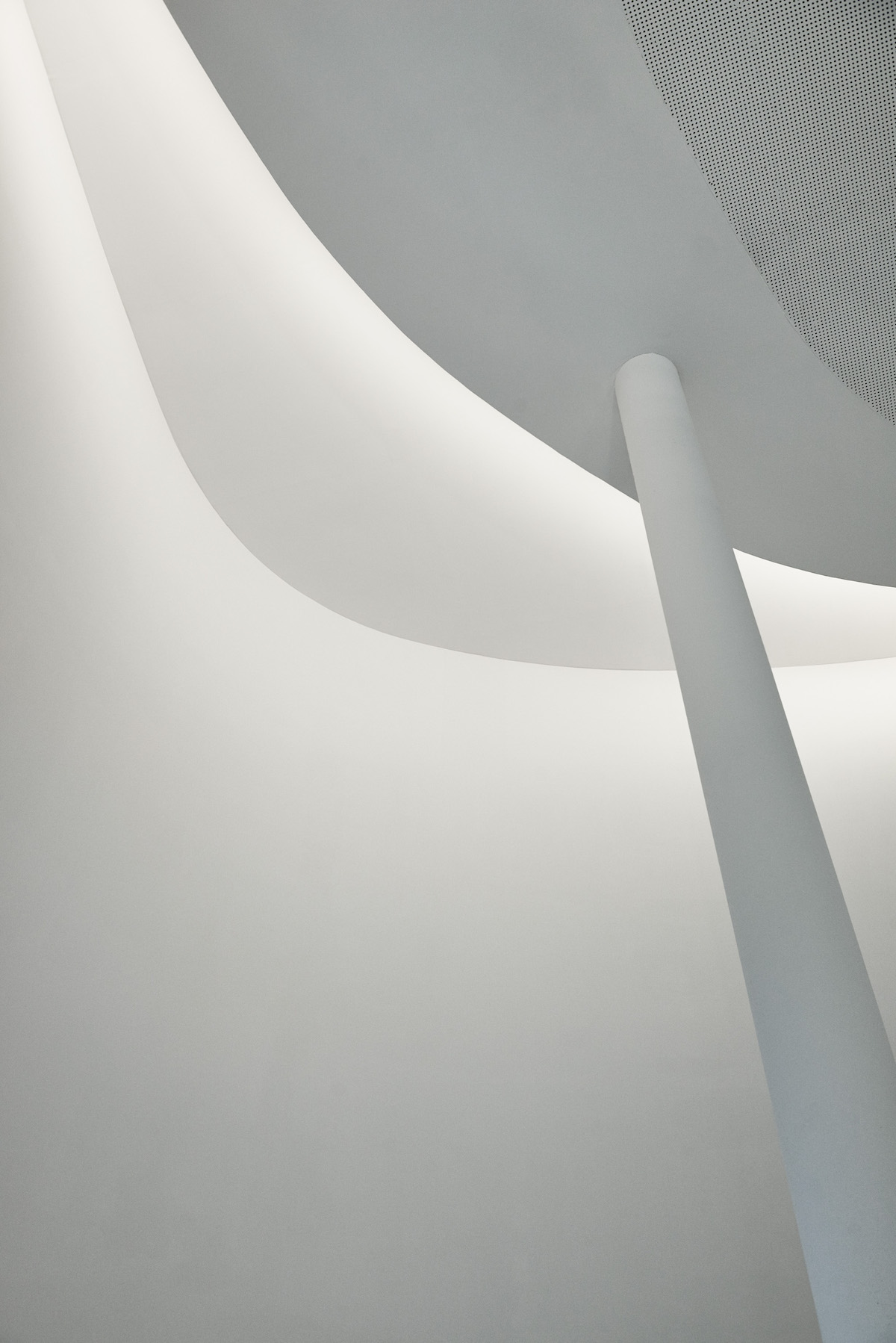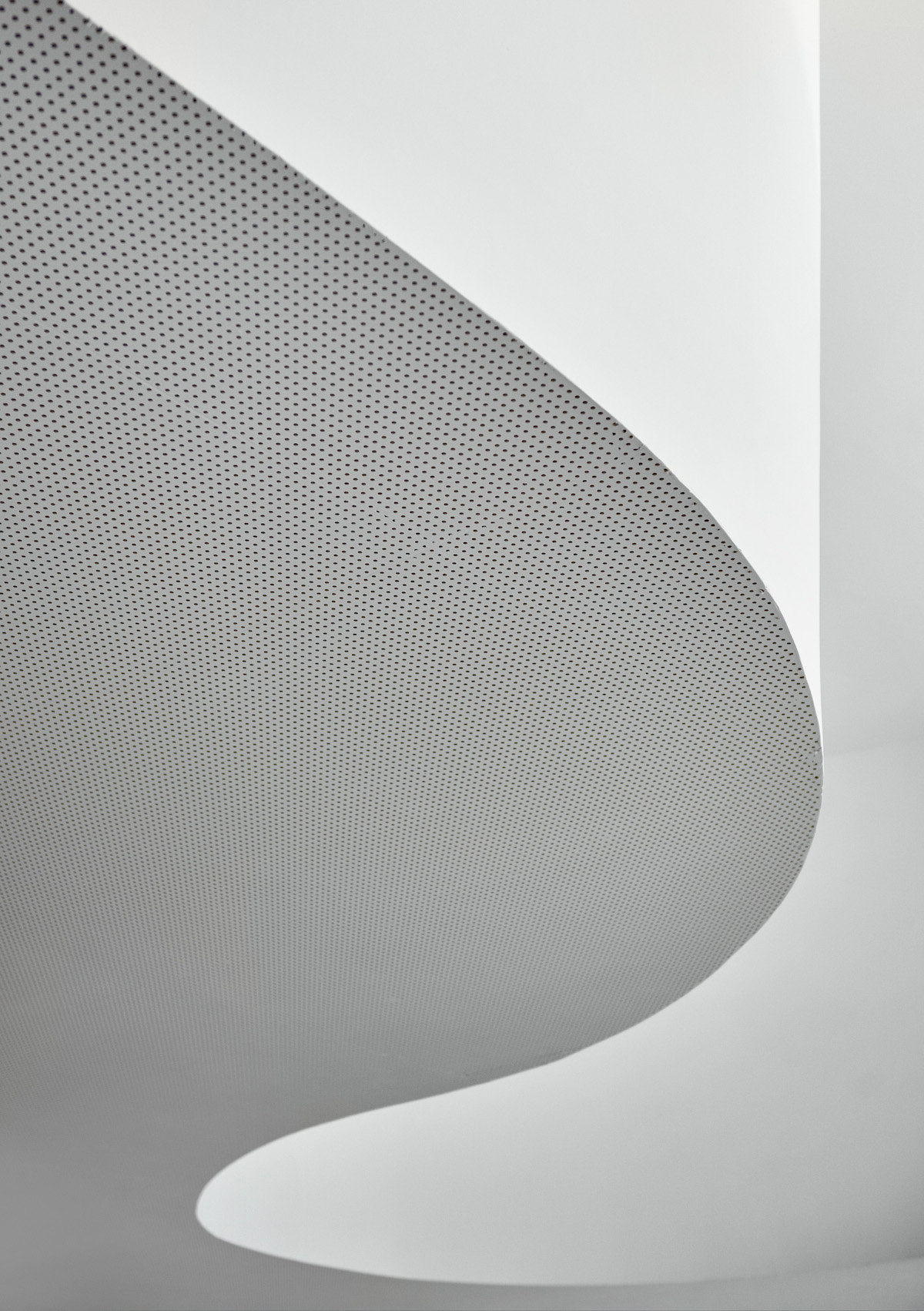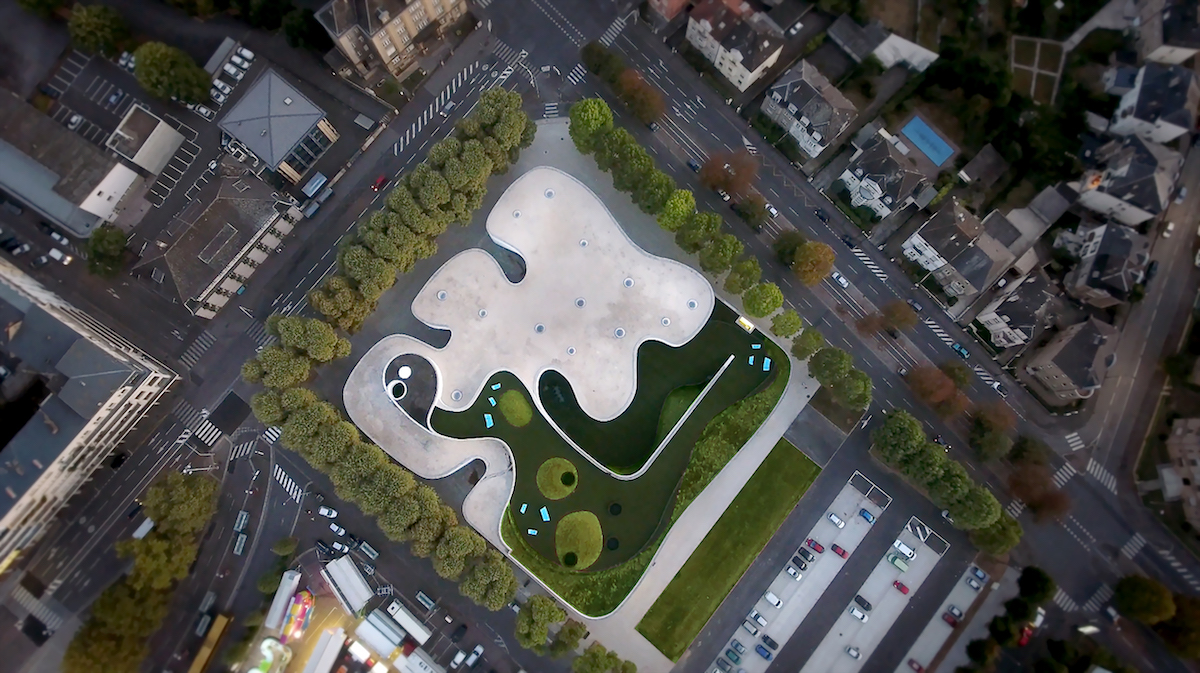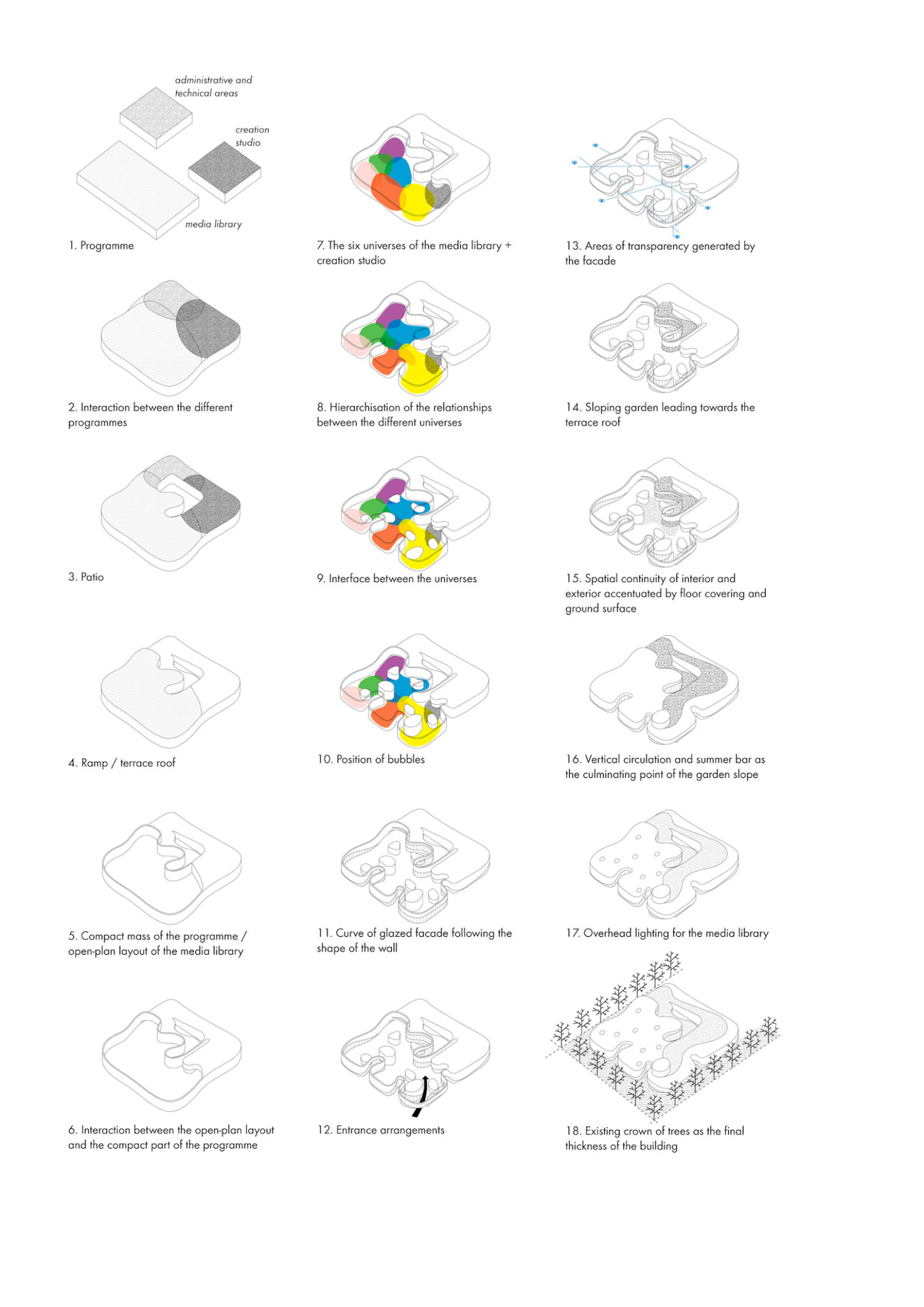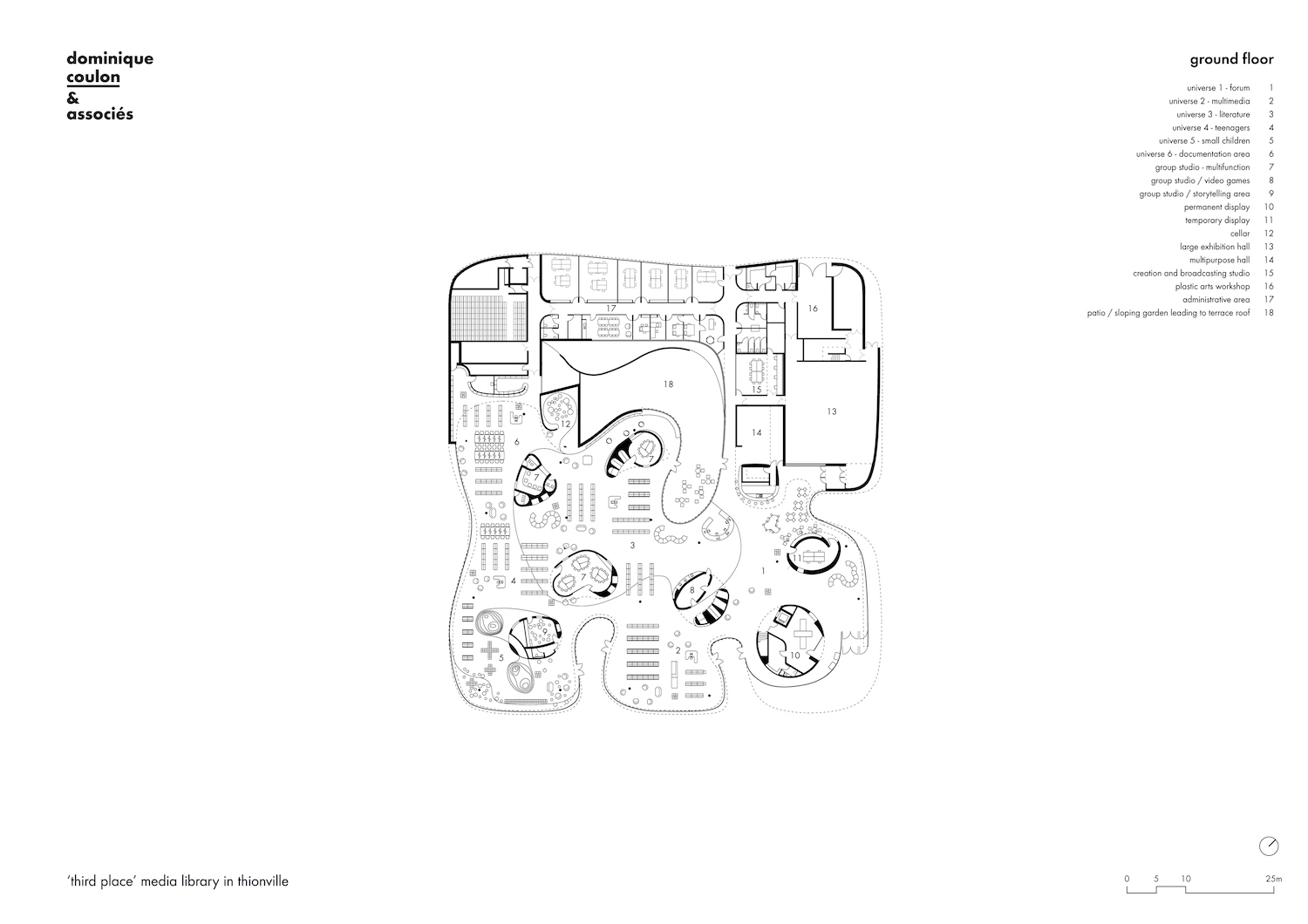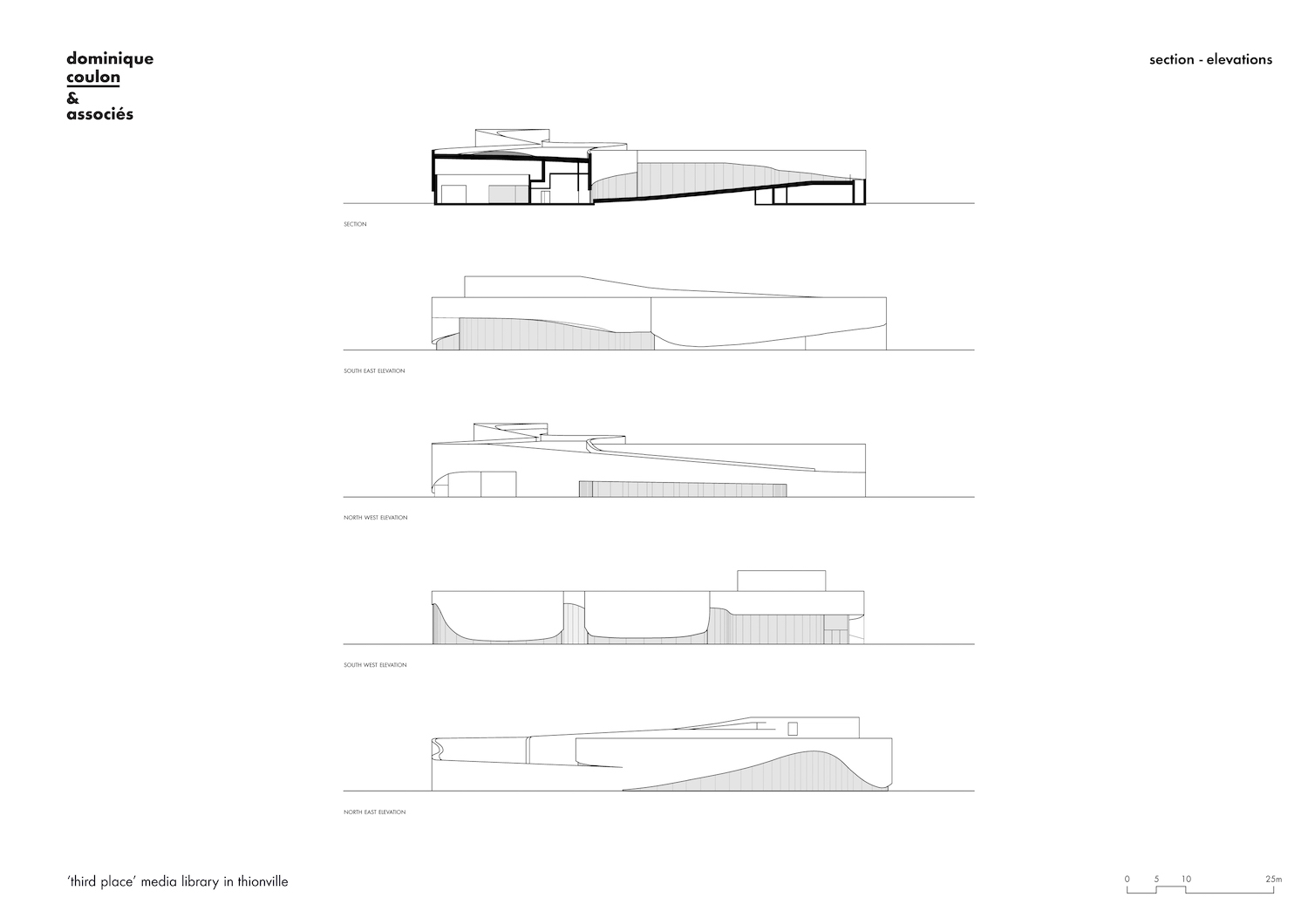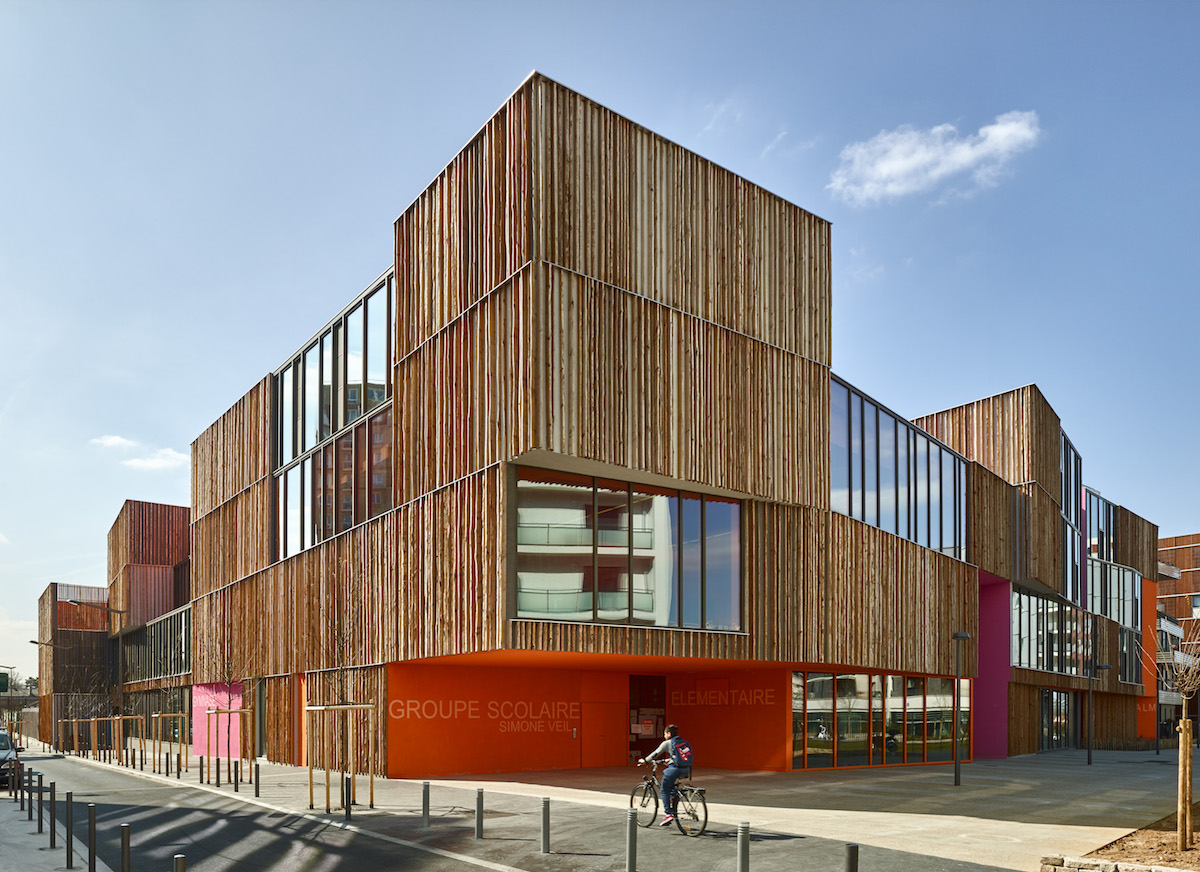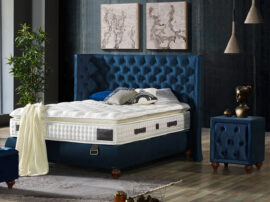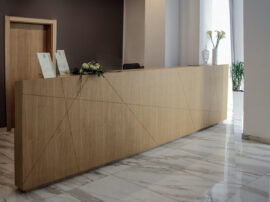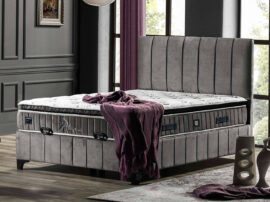This project has the ambition of becoming a new model for media libraries. The programme calls the functions of a media library into question, lending it the content of a ‘third place’ – a place where members of the public become actors in their own condition, a place for creation as well as reception. In association with the basic programme, the building includes areas for displays, creation, music studios, and a café-restaurant. To give meaning to this new programme, it seemed necessary to question the way in which a place of this kind is produced. The various activities in the programme blend into each other, creating a dynamic arrangement. The spatial principle is based on a non-hierarchical superposition of different systems.
The building is set within a square, an isotropic figure that does not privilege any one direction. The figure is created by the geometry of the site. The building comes up close to the crown of plane trees surrounding the site. This is the first thickness to act as a filter from the street, apparently playing with this first colonnade of plant-life.
The facade serves as an unfurling ribbon that serves as a backdrop to the different universes contained in the programme. The hollows in the folds of the facade embrace these universes, while the wrap effect impacts a sense of spatial continuity.
The envelope acts as a protective membrane that both contains the space and maintains a constant relationship with the outside. At its closest to the street, the ribbon dips, the better to contain it, rising again where it stands further back. In the hollows, the border between the interior space and the urban space is less clear and makes it possible to come closer, to embrace the building visually. The hollow and solid sections produce an ambiguity between inside and outside, questioning the borders of the public space. Space becomes uncertain: it ceases to have clear outlines, and calls itself into question in practical terms.
Light spreads out along the ribbon, and the ribbon distributes the light to the area right in the heart of the building. A garden ramp offers another escape route to the outside, leading upwards to a summer bar, the culminating point of the architectural promenade. The garden extends the indoor walkway, getting closer to the line of the horizon; the town disappears, leaving just the crown of plane trees to dialogue with the sky. New uses become possible: people can take a nap, picnic, read outside, or gather in a group.
The building rests on a principle of independent, irregular systems. Stacking these simple systems, each with their own logic, creates tension in the space and in how it is read. In this way, the optical perceptive space eludes the Euclidean space and its preference for straight lines.
The posts are not organised according to a legible regular line, but appear to have been positioned randomly, even though they literally respond to the requirements of stability. This irregularity removes the virtual constraint of an orthonormal structure, leaving the appearance of disorder.
The bubbles contain very specific elements of the programme, such as a storytelling area, language laboratories, places for playing video games, a plastic arts room, etc. Their shape and height depend on their function. They are defined as cocoons where people are cut off from the other universes, escaping from the collective area. A very wide range of materials is used: rough and smooth cork surfaces contrast with the immaculate white of the plastic arts room. The bubbles are the last refuge, the most intimate part of the building. They do not respond to Cartesian logic either. The distance between them depends on their area of influence and on their scale.
Similarly, the floors and ceilings of the principal space are made of discontinuous, autonomous surfaces, with lines that are independent of each other. The colour and the materials of the principal space bring out variations of light and colouring that contrast with the material nature of the bubbles. Green and white extend the garden, which penetrates the heart of the building and form a connection with the crown of plane trees.
The space is fluid, and the multiple routes offer new and constantly renewed viewpoints. The promenade turns into a process of revealing the various universes. The unfolding of the envelope accentuates this impression of infinite space. The ribbon takes on its full force. In this “ineffable” space, the notion of gravity seems to disappear – the roof and walls appear to float.
Within the building, postures are multiple – it is possible to curl up, stretch out, perch at a height, and swing. The ergonomics of the building are called into question, and the place of the body is rehabilitated in a playful approach.
The layers and overlays build up, yet each retains its own autonomy and logic. This project contains arrangements that stand comfortably side by side. The different logics – of the programme, the structure, and the space – are mutually enriching. This sophistication generates a “plastic acoustic” that lends this new place an atmosphere which transports and re-examines the relationship with the body and fluidity. There is no unequivocal reading of the space; the perception one has of it reveals a complexity and an unexpected richness. It is a place of freedom.
Project Information:
Name: Media library ‘Third-Place’ in Thionville
Client : Ville de Thionville
Architect : Dominique Coulon & associés
Dominique Coulon, Steve Letho Duclos
Architects assistants : Gautier Duthoit
Construction site supervision : Steve Letho Duclos
Engineers and consultants :
Structural Engineer : Batiserf Ingénierie
Electrical Engineer : BET G.Jost
Mechanical Plumbing Engineer : Solares Bauen
Cost Estimator : E3 économie
Acoustics : Euro sound project
Landscape : Bruno Kubler
Program : Media library, creative studios, broadcasting media room and auditorium
Address : 1 place Malraux, 57100 Thionville / Google Maps location : 49.359122, 6.161338
Surface : 4590 sqm
Budget : 11 000 000€
Schedule :
Competition : October 2010
Plans and technical phases : from march 2011 to january 2012
Construction : from may 2012 to september 2016
Construction companies :
Earthworks road works (COSTANTINI), special foundations (SOLS ETANCHE BACHY), structure (CARI), metal structure (ERTCM), water proofing (SOPREMA), exterior metal joinery –glass (MGE / SOCOMET), metal works (SMF), exterior isolation and facade (ISOLA), scaffolding (KAPP), plastering (KUPELI), interior wood joinery (HUNSINGER), concrete slab (BATI PROCARRELAGE), tiled floors (BATI PROCARRELAGE), glued floors (DEBRA), cast flooring (GUINAMIC), interior painting cleaning (APPEL), elevator (FELLER), green areas (ISS), drainage (COSTANTINI), heating ventilation (LORRY), plombing drainage (LORRY), electricity (INEO), VDI cabling (INEO), scenic works (EUROPODIUM), audiovisual scenic equipements (MICHELSONNE)
3D Animation : Brooklyn Foundry
Photography : Eugeni Pons, David Romero-Uzeda


